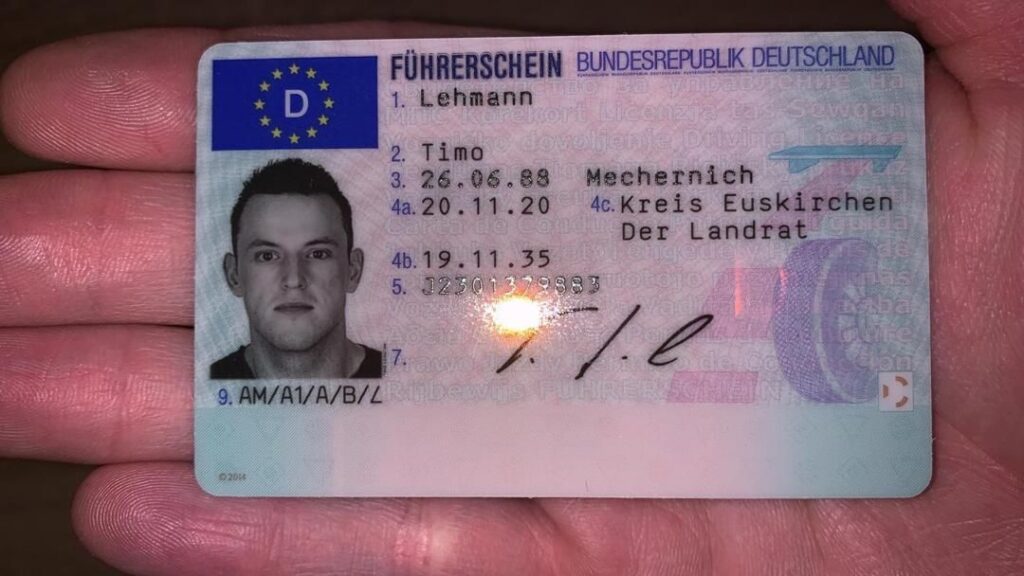Understanding Road Traffic Regulations: A Comprehensive Guide
Road traffic regulations are essential for guaranteeing the safety of motorists, pedestrians, and other road users. Führerschein Kaufen Seriös govern the operation of automobiles, the behavior of motorists and pedestrians, and facilitate smooth traffic circulation. This short article delves into the different aspects of roadway traffic regulations, their significance, and some typical rules and policies that every road user should be familiar with.
The Importance of Road Traffic Regulations
Road traffic regulations serve numerous crucial purposes:
- Safety: They are mainly developed to protect the lives of individuals on the roadway, lowering mishaps and injuries.
- Organized Traffic Flow: By developing clear guidelines, these guidelines assist in managing the circulation of cars and reducing blockage.
- Protection of Pedestrian Rights: They guarantee that pedestrian crossings and rights-of-way are respected, promoting more secure travel on foot.
- Environmental Considerations: Certain regulations aim to minimize ecological impact, encouraging environmentally friendly driving practices.
- Legal Framework: They provide legal responsibility for drivers and pedestrians, marking penalties for violations.
Secret Elements of Road Traffic Regulations
Comprehending road traffic regulations is vital for compliance and security. Below are a few of the crucial elements:
| Element | Description |
|---|---|
| Traffic Signs | Numerous indications that offer info and directions to motorists. |
| Traffic Signals | Lights that manage the circulation of traffic at intersections. |
| Speed Limits | Optimum and minimum speed limits set for various roadway types. |
| Access Rules | Standards on which roadway users ought to go initially at crossways. |
| Seat Belt Regulations | Laws mandating the wearing of seat belts for driver and passengers. |
| Driving Under the Influence | Rigorous charges for running an automobile while impaired by alcohol or drugs. |
| Lorry Registration and Licensing | Requirements for lorries to be registered and chauffeurs to possess valid licenses. |
Typical Traffic Regulations
Although traffic regulations can differ from one nation to another, some typical rules are generally observed worldwide:
1. Speed Limits
The majority of jurisdictions impose speed limitations based on roadway type and location, such as:
- Residential locations: 25-35 miles per hour
- Urban locations: 30-50 miles per hour
- Highways and freeways: 55-70 miles per hour
2. Drinking and Driving
Driving under the impact of alcohol or drugs is illegal in the majority of places. Common blood alcohol concentration (BAC) limitations are:
- 0.08% for general drivers
- 0.00% for novice or business motorists
3. Seat Belt Usage
Seat belts should be used by all residents in an automobile. Failure to comply can cause fines.
4. Pedestrian Crossings
Motorists should yield to pedestrians at significant crosswalks and comply with signals directing pedestrian motion.
5. Mobile Phone Use
Using portable devices while driving is restricted in lots of areas to reduce diversions.
FAQ Section
Q1: What should I do if I witness a traffic violation?
If you observe a traffic offense, you must gather as much info as possible (vehicle description, license plate number, area, and time) and report it to regional police.
Q2: How can I stay updated on modifications in traffic regulations?
Traffic laws can change regularly. Updates are usually released by city government sites. It is recommended to follow local news or traffic law enforcement agencies' announcements for any modifications.
Q3: Are there particular traffic guidelines for business motorists?
Yes, industrial drivers often face stricter policies, such as driving hour restrictions, automobile evaluations, and special licensing requirements.
Q4: What happens if I break traffic policies?
Penalties for breaking traffic laws can consist of fines, points on your license, and in severe cases, imprisonment. Repetitive violations might lead to the suspension of driving advantages.
Q5: How do traffic guidelines impact public transport?
Traffic guidelines are crucial for public transportation systems to operate efficiently. They assist in establishing bus lanes, managing taxi services, and ensuring that public transport vehicles follow security requirements.
Roadway traffic guidelines play a critical role in preserving the safety and order of roads globally. Understanding these laws is not just a legal obligation but an ethical one that promotes the wellness of all roadway users. Continuously upgrading oneself about traffic guidelines and sticking to them can greatly decrease the threats connected with road travel. As communities progress and innovations improve, these guidelines may likewise adapt, necessitating continuous learning for motorists, cyclists, and pedestrians alike.
By keeping notified and staying certified with roadway traffic guidelines, people contribute positively to the shared obligation of roadway safety, eventually reducing mishaps and saving lives.

